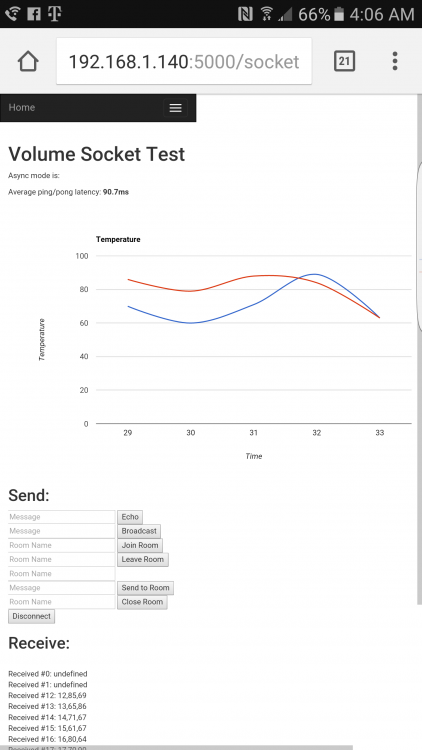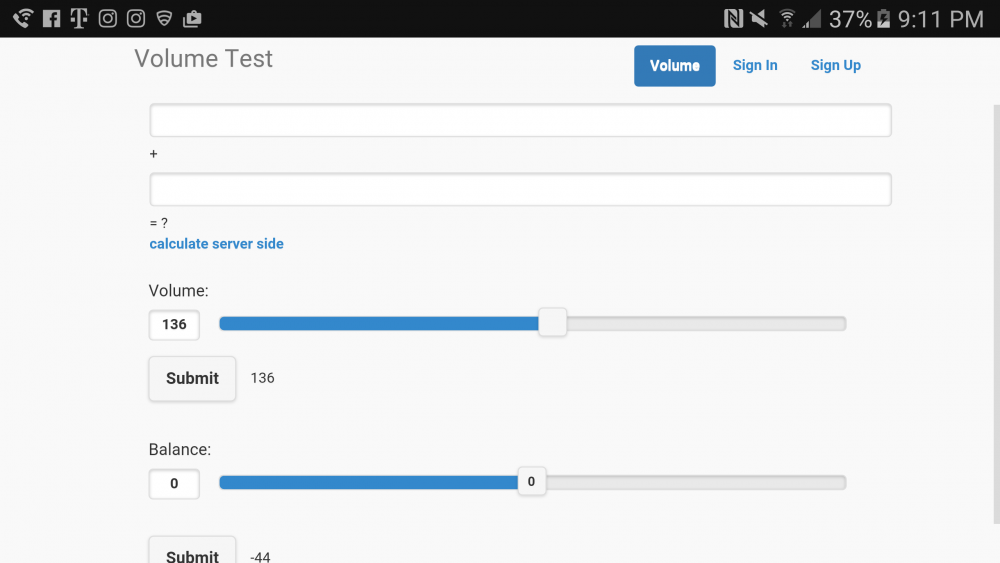-
Posts
6,011 -
Joined
-
Last visited
-
Days Won
2
Content Type
Profiles
Forums
Events
Everything posted by mypasswordis
-
food for thought
-
Happy birthday!
-
Why not just match some 2sk170s or use a LSK389?
-
Gorgeous work! I don't have access to my old PS2 Float at the moment to look over but hope you don't mind if I shoot you a few questions in a couple weeks. Quick obvious questions, though: what is the stator spacing and bias? Is it the same as the drivers in the new JF model?
-
Could you post some driver pics of your JF clone?
-
Speaking of something similar, I always wanted to do something similar to Krell's iBias and I'm nearly halfway there with the temperature control aspect of it. When I'm done I should be able to change a setting for desired maximum temperature remotely through RPi and have the bias auto scale to be just under that temperature. Got any tips in implementation of this and how hard would it be to add the output current sensing part of it?
-

Group Buy - Digital Attenuator (Kevin Gilmore)
mypasswordis replied to sorenb's topic in Do It Yourself
Got web sockets working so now temperature or any other sensor data can be shown in real time without having to make any client server requests. I have the i2c ADCs and temperature sensors low level code, just need to incorporate them as right now the data array is generated from integer random generator. The latency is pretty variable while on my phone, though, it's more stable on my laptop for some reason. Potentially can make a crude WiFi oscilloscope! Edit: anyone have experience with bit banging spi for writing to SD card? -
Cool. In that case, eutectic solder has the lowest melting point, so 370 and 430C are too high. Try cranking the temp down, applying heat for less time, and using less solder and see if your joints look better. Hopefully that means when you solder the new terminal block you won't be leaking that flux residue to the feedback trace again. You really want the lowest temperature that can still work, because higher temperatures mean shorter tip and heating element life, burnt flux, more thermal stress on the components and pads, etc. Also, I don't know what flux you are using, but make sure if it is rosin activated/corrosive that you clean all of it off everywhere you can. I use standard Kester 44, which has somewhat alarmingly strong claims to contain no-clean activated rosin core: For extreme overkill, you can also use a terminal block with more isolated pins like JoaMat posted or put the block in from the other side if possible, but I'd play around with soldering technique a bit more first because it's just good practice.
-
It is easy to remove the SOT223 transistors, easier than through hole components. all you need is some wick/braid. Well, maybe not so easy if there is a resistor or terminal block in the way, which is probably what you mean... Check out Hakko's site also, there are some pics and info on temps: https://www.hakko.com/english/lead_free/pages/ I realized you are in the EU so most likely use lead-free solder, and the Hakko site says around 380C for that. I would go more with the first OK solder joint in your linked pic and also the satisfactory example in Hakko's site. Lead-free solder is more likely to develop tin whiskers IIRC, which further increases likelihood of arcing. That shouldn't have been the problem in this case because they usually take months or years to grow. I was just wondering about temperature because there are brown spots on some of your joints, which may mean not all of the flux is melting? That wouldn't make sense especially if you set it to 430C, which is way too hot. Not enough thermal recovery doesn't make sense, either, because it's happening even with the resistors and a lot of solder is clearly flowing from the other side. Maybe too hot or too much time soldering the joint?
-
Did you solder the big collector tabs on all the SOT223 package transistors for better heat transfer? I would wick off some of that excess solder clump on the smaller tabs, too. It looks like you use general amounts of solder in general, less would help (including on the terminal blocks). What temperature did you set your iron to?
-
What about the Anos mod?
-
Pre-bankruptcy Staxen >>>>> everything else Still unsure about HE60 as pabbi1's HE60 out of that Cavalli amp (forget what it's called) sounded worse than ipod earbuds out of a dumpster, but maybe that's because he listens to everything over 9000 dB and broke them. I bought a Gamma Pro awhile back to use as a spare in case my SR-X Pro drivers die but they ended up sounding good, too, so now I need to buy another one.
-
I'm going to spend the next few months training to dunk, any tips? I think I can just about touch the rim right now, so need another few inches on my vert and probably better form.
-
Hey Brent, have you heard about about this weird sporting event that happens every four years where the best athletes in the world congregate in one place and compete?
-
Is that you, Patrick82? If so, I challenge you to a drinking contest. My record still stands at 35 shots of whiskey in one day but I'll beat it if I have to.
-
Just googled the LSR 305... you can't be happier than with $100 5" monitors and call the NS1000s clusterfucks? Okay, buddy..... This is what Yamaha resources nets you, on top of Monel-coated zylon drivers:
-
I'm still considering buying a pair of NS1000 or NS2000 if I'm lucky. And yes the NS5000 is 10-11k USD
-
Beryllium is old hat at this point, Yamaha has moved on from the NS1000 beryllium to the NS5000M and zylon now. " The mystery material is a synthetic polymer called ‘Zylon’, which is manufactured in two varieties, Zylon-AS and Zylon-HM. It is used by NASA and in Formula One cars, and according to manufacturer Toyobo’s spec sheet for Zylon, it is indeed lighter and stronger than beryllium, its density 1.55g/cm3 compared with 1.8g/cm3 for beryllium, and its tensile strength 5.8 gigapascals compared with only 0.24 gigapascals for beryllium, and surpassing even carbon fibre at 3.5GPa. Zylon is also amazingly flame resistant, according to Toyobo, hopefully something prospective NS-5000 owners will never need to discover. "
-
Joe, the input zener string is set to 50V above output VDC so 400VAC could be cutting it close for 500VDC output depending on your primary voltage. ~420VAC is probably the best compromise. The reason it's measuring 450 is the primary voltage is 10V above 220V.
-

Dissonant Tones Sound Fine To Some People Not Raised on Western Music
mypasswordis replied to wink's topic in Headphones
You're missing the point as well.... The point is that even in seemingly absence of sound in an anechoic chamber, there is still sound being produced, even if it's from your own body. So nothing is never nothing. Whether you consider the sound of your nervous system, blood circulation, or heartbeat is consonant or dissonant is up to you. -

Dissonant Tones Sound Fine To Some People Not Raised on Western Music
mypasswordis replied to wink's topic in Headphones
Manzoni putting shit in cans has nothing to do with Cage's piece? If you're saying Cage's 4'33" is shit, that's one thing, but they're totally different in conception (and implementation). This is the inspiration for 4'33", quote taken from wiki: " In 1951, Cage visited the anechoic chamber at Harvard University. An anechoic chamber is a room designed in such a way that the walls, ceiling and floor absorb all sounds made in the room, rather than reflecting them as echoes. Such a chamber is also externally sound-proofed. Cage entered the chamber expecting to hear silence, but he wrote later, "I heard two sounds, one high and one low. When I described them to the engineer in charge, he informed me that the high one was my nervous system in operation, the low one my blood in circulation."[14] Cage had gone to a place where he expected total silence, and yet heard sound. "Until I die there will be sounds. And they will continue following my death. One need not fear about the future of music."[15] The realization as he saw it of the impossibility of silence led to the composition of 4′33″. " The above performance reduces the piece to some sort of odd slapstick comedy -

Dissonant Tones Sound Fine To Some People Not Raised on Western Music
mypasswordis replied to wink's topic in Headphones
This guy completely doesn't understand the point of 4'33" whatsoever and is making the piece all about him and his stupid antics. The performer should not get in the way of the sound of the audience, which in fact then becomes the "performer" and audience simultaneously. This is the score (one version): @Craig Sawyers try Stimmung or Kontrapunkte! -

Group Buy - Digital Attenuator (Kevin Gilmore)
mypasswordis replied to sorenb's topic in Do It Yourself
Server volume test is up and running for the i2c boards, here is screenshot of test volume and balance control Web page and i believe it should work for almost all browsers and devices. I will try to get modernizr working just in case. Also will finally start troubleshooting spi boards now and add some other cool features... -

Dissonant Tones Sound Fine To Some People Not Raised on Western Music
mypasswordis replied to wink's topic in Headphones
Oooh Pars, the origin of your username is very cool. We did an analysis of part of the other of Wagner's influential pre-atonal operas, Tristan und Isolde with its infamous Tristan chord. It's funny that the Brahms and Wagner/progressive camps hated each other because both composers revered Beethoven greatly and just saw themselves as logical successors. Schoenberg wrote a famous essay, Brahms the Progressive, which illuminated why he didn't agree with the paradigm of Brahms as conservative. Also interesting that Wagner's music influenced Schoenberg deeply (of course Brahms as well), despite Schoenberg being a Jew and eventually needing to flee Austria because of the Nazis. Proof that music transcends politics and whatever other bullshit people think of to spread hate and destruction. @Pars again, not sure what you mean by alternate tonalities, but different tunings definitely irk people with perfect/absolute pitch. Usually they can still tell the pitch unless it's way off. I don't even completely buy into the concept of perfect pitch, because instruments were tuned to totally different frequencies at various points in history, and it wasn't standardized for a long time. Concert pitch A is "440Hz" today (more like 441-443) but back in the Baroque it was more like 415Hz (albeit with a wide range), which is a full semi-tone down from 440. Not only that, what about music that is microtonal? I think people who have it may associate a certain harmonic profile with a pitch or glean some other auditory information, and unconsciously compare that with their excellent auditory memory. One can't mention Stockhausen without bringing up the Helicopter quartet Can't see why he wouldn't be popular after that. Sounds like you knew him personally... if so, got any stories? do you know Per Nørgård? And what key is your guitar transcription of 4'33"?




